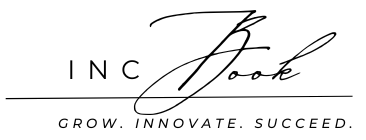In the fast-paced world of business, effective cash flow management is crucial for sustaining operations and driving growth. Accounts receivable financing offers a valuable solution for companies looking to unlock cash tied up in unpaid invoices, providing immediate access to funds that can be reinvested into the business. However, navigating the complexities of this financing option requires a strategic approach. From understanding the nuances of your customer base to selecting the right financing partner, successfully leveraging accounts receivable financing can significantly enhance your financial stability. In this article, we present 22 essential tips designed to help you optimize your accounts receivable financing strategy, ensuring that your business remains agile and prepared for any financial challenges that may arise.
1. Know Your Customers 🧑🤝🧑
Key Point: Understanding your clients’ payment histories and financial stability is crucial.
Before entering into accounts receivable financing, conduct thorough credit checks on your customers. Look for reliable payment patterns, creditworthiness, and financial health. This information helps you gauge the risk associated with financing your invoices. A strong customer base with a history of timely payments reduces the risk for both you and the financing company. It also enhances your negotiating power with lenders.
Additional Tip: Maintain a detailed database of your clients, including past payment behavior, to streamline this process and make informed decisions about which invoices to finance.
2. Choose the Right Financing Partner 🤝
Key Point: Selecting a reputable and suitable financing partner can make a significant difference.
Research and compare various financing companies that offer accounts receivable financing. Look for lenders with experience in your industry, transparent fee structures, and flexible terms. Consider factors such as the speed of funding, customer service quality, and the ability to customize financing solutions to fit your business needs.
Additional Tip: Read reviews and ask for references from other businesses that have used the lender’s services to ensure reliability.
3. Understand the Terms and Fees 💰
Key Point: Fully grasping the financing terms helps you avoid unexpected costs.
Before signing any agreement, take the time to understand the terms of the financing arrangement, including interest rates, fees, and repayment schedules. Look out for hidden charges that can significantly impact your costs. Some common fees include processing fees, late payment fees, and service charges.
Additional Tip: Request a detailed breakdown of all costs involved in the financing process to ensure there are no surprises later.
4. Invoice Promptly and Accurately 📄
Key Point: Timely and precise invoicing can streamline the financing process.
Ensure that you issue invoices as soon as goods or services are delivered, and double-check that all details are accurate. This includes the invoice number, date, amounts, payment terms, and customer information. Inaccurate or delayed invoices can lead to payment disputes or delays, affecting your cash flow and the financing process.
Additional Tip: Use invoicing software that automates the process to minimize errors and ensure consistency.
5. Maintain a Strong Relationship with Your Lender 📞
Key Point: Building rapport with your financing partner can facilitate better terms and support.
Once you’ve selected a financing partner, maintain open lines of communication. Regularly update them on your business performance, especially any significant changes that could impact your accounts receivable. A strong relationship can lead to more favorable terms, quicker response times, and tailored financing solutions as your business grows.
Additional Tip: Schedule periodic check-ins with your lender to discuss your financial health and any upcoming needs for financing.
6. Set Clear Payment Terms 📅
Key Point: Clear and concise payment terms can help avoid misunderstandings and late payments.
When you issue invoices, ensure that payment terms are explicitly stated, including the due date and any penalties for late payments. Clearly outline whether you offer any discounts for early payment, as this can encourage quicker payment from your customers. Setting clear expectations helps manage your cash flow and reduces the likelihood of disputes with clients regarding payment timing.
Additional Tip: Consider standardizing your payment terms across all invoices to maintain consistency and clarity for your customers.
7. Implement a Robust Credit Management System 📊
Key Point: A solid credit management system can help monitor and mitigate risk.
Develop a system for assessing the creditworthiness of new clients before extending credit. This could involve using credit reports, trade references, and financial statements. Regularly review your existing customers’ payment behaviors to identify any that may pose a risk of late or missed payments. By proactively managing credit, you can minimize potential issues when financing invoices.
Additional Tip: Utilize credit management software to automate tracking and reporting on customer payment behaviors, making it easier to identify potential risks early.
8. Monitor Cash Flow Regularly 🔍
Key Point: Regular cash flow monitoring allows for proactive management of financing needs.
Keep a close eye on your cash flow to understand how accounts receivable financing fits into your overall financial picture. Tracking when you expect payments from clients helps you identify periods of cash flow tightness, allowing you to plan ahead for financing needs. Regular cash flow analysis can also help you assess the effectiveness of your accounts receivable strategy.
Additional Tip: Use cash flow forecasting tools to project future income and expenses, helping you anticipate financing needs well in advance.
9. Keep Communication Open with Clients 📞
Key Point: Maintaining communication with your customers can facilitate timely payments.
Establishing strong communication channels with your clients can help ensure they are aware of their payment obligations. If you anticipate any delays in receiving payment, reach out proactively to discuss the situation. Open lines of communication can also help you gather feedback on any issues they may have with your invoicing or services, allowing you to address potential problems before they affect payment.
Additional Tip: Send polite reminders as payment due dates approach, and follow up promptly if a payment is missed.
10. Evaluate Your Financing Options Regularly 🔄
Key Point: Periodically reassessing your financing options can help you find better terms and rates.
As your business grows, your financing needs may change. Regularly review the accounts receivable financing market to ensure you are getting the best terms available. Look for lenders that may offer better rates or more favorable conditions based on your increased revenue and improved credit profile. Additionally, reassess whether invoice factoring, invoice financing, or a line of credit best suits your current business needs.
Additional Tip: Set a schedule for reviewing financing options—perhaps quarterly or bi-annually—to keep your financing strategy aligned with your business growth.
11. Diversify Your Client Base 🌍
Key Point: A diverse client base can reduce risk in your accounts receivable.
Relying heavily on a few clients for your revenue can be risky, especially if one or more of them face financial difficulties or delays in payment. By diversifying your client base, you spread the risk and create a more stable cash flow. This is especially important when financing accounts receivable, as having reliable customers from various sectors can help ensure consistent payments and mitigate potential losses.
Additional Tip: Aim to cultivate relationships with clients across different industries to safeguard against sector-specific downturns.
12. Use Technology to Streamline Invoicing 💻
Key Point: Leveraging technology can improve efficiency and reduce errors in your invoicing process.
Investing in invoicing and accounting software can automate many aspects of the invoicing process, from generating invoices to sending reminders for overdue payments. This not only saves time but also minimizes human error, ensuring that invoices are accurate and sent promptly. Additionally, many software solutions can integrate with your accounts receivable financing process, allowing for easier tracking and management of invoices.
Additional Tip: Look for software that provides analytics on customer payment behaviors, helping you identify patterns and adjust your credit management strategy accordingly.
13. Understand Your Financing Costs 📉
Key Point: Knowing the full cost of financing is crucial for maintaining profitability.
Before proceeding with accounts receivable financing, ensure you understand the total costs involved, including any fees, interest rates, and the terms of the repayment schedule. These costs can add up quickly and may impact your profit margins if not carefully monitored. Calculate the effective annual rate (EAR) to compare different financing options, ensuring you choose the most cost-effective solution for your business.
Additional Tip: Regularly review and analyze your financing expenses to determine if switching to a different lender or financing type could save you money.
14. Stay Organized with Documentation 🗂️
Key Point: Proper documentation helps streamline the financing process and ensures compliance.
Maintaining organized records of all invoices, payment terms, customer communications, and financing agreements is essential for a smooth accounts receivable financing experience. Proper documentation ensures you can provide necessary information to your lender quickly and efficiently, which can speed up the approval process for financing. Moreover, organized records can help resolve any disputes with customers or lenders more effectively.
Additional Tip: Consider implementing a document management system that allows for easy retrieval and storage of important financial documents.
15. Train Your Team on Best Practices 📚
Key Point: Equipping your team with knowledge ensures a smooth accounts receivable financing process.
Make sure that your finance and sales teams understand the nuances of accounts receivable financing, including how it works and best practices for managing customer accounts. Training your team to recognize potential payment issues early and encouraging open communication with clients can improve collections and enhance your overall financing strategy. An informed team is better equipped to support your business’s financial health.
Additional Tip: Regularly schedule training sessions and updates to ensure that your team stays current with financing best practices and any changes in the market.
16. Maintain Accurate Customer Records 📚
Key Point: Keeping detailed records helps streamline collections and financing processes.
Maintaining accurate and up-to-date records for each customer is essential for effective accounts receivable financing. This includes contact information, payment history, communication logs, and notes on any agreements or disputes. Having this information readily available can facilitate smoother interactions with both clients and lenders, ensuring prompt follow-ups and a better understanding of each customer’s financial behavior.
Additional Tip: Use a Customer Relationship Management (CRM) system to manage and track customer interactions, improving overall efficiency.
17. Establish a Follow-Up Process 🔄
Key Point: Consistent follow-ups can lead to timely payments and stronger client relationships.
Develop a structured follow-up process for invoices that are nearing or past their due dates. Automate reminders for upcoming payments to keep clients informed, and set up a schedule for personal follow-ups on overdue invoices. A proactive approach can encourage clients to prioritize your invoices, improving your cash flow.
Additional Tip: Personalize your follow-up communications to foster a good relationship with your clients and increase the likelihood of timely payments.
18. Consider Partial Financing Options 🪙
Key Point: Financing only a portion of your receivables can help manage costs and cash flow.
Instead of financing all your outstanding invoices, consider partial financing to manage costs more effectively. This allows you to retain some control over your receivables and reduces the total financing costs. It can also provide flexibility in managing your cash flow while still benefiting from quick access to cash.
Additional Tip: Assess which invoices are most critical to finance based on urgency and payment reliability, ensuring that you use financing strategically.
19. Negotiate Terms with Your Lender 🤝
Key Point: Negotiating terms can lead to better rates and conditions for your financing arrangement.
Don’t hesitate to negotiate with your financing partner. Discuss your business’s financial health and growth potential to advocate for better terms, such as lower fees or extended repayment periods. A strong relationship with your lender can open the door to more favorable financing conditions as your business grows.
Additional Tip: Approach negotiations with data to support your case, such as demonstrating a strong payment history and improved cash flow.
20. Utilize a Collections Agency When Necessary 📞
Key Point: In cases of persistent late payments, a collections agency can help recover funds.
If you encounter persistent issues with late or unpaid invoices, consider engaging a professional collections agency. These agencies specialize in recovering debts and can often succeed where internal efforts fail. While this may incur additional costs, it can help preserve your cash flow and maintain your focus on running your business.
Additional Tip: Ensure that any collections agency you work with aligns with your business values and practices ethical collection methods to maintain your reputation.
21. Regularly Review Financing Performance 📈
Key Point: Evaluating the effectiveness of your financing strategy can lead to improvements.
Set a schedule to review the performance of your accounts receivable financing regularly. Analyze how effectively it is meeting your business’s needs and contributing to cash flow. Look for patterns in payment behaviors and financing costs to identify any adjustments that could improve your financial strategy.
Additional Tip: Use this review process to set goals for reducing financing costs or improving the collection cycle in the future.
22. Stay Informed About Industry Trends 🌐
Key Point: Keeping up with trends in financing can help you make informed decisions.
The world of accounts receivable financing is constantly evolving, with new products, technologies, and regulations emerging regularly. Stay informed about these trends to ensure you are using the most effective strategies for your business. Subscribe to industry newsletters, attend webinars, and network with other professionals to gain insights into best practices and innovative financing solutions.
Additional Tip: Joining industry associations can provide access to valuable resources and connections that can further your knowledge and enhance your business’s financial strategy.



